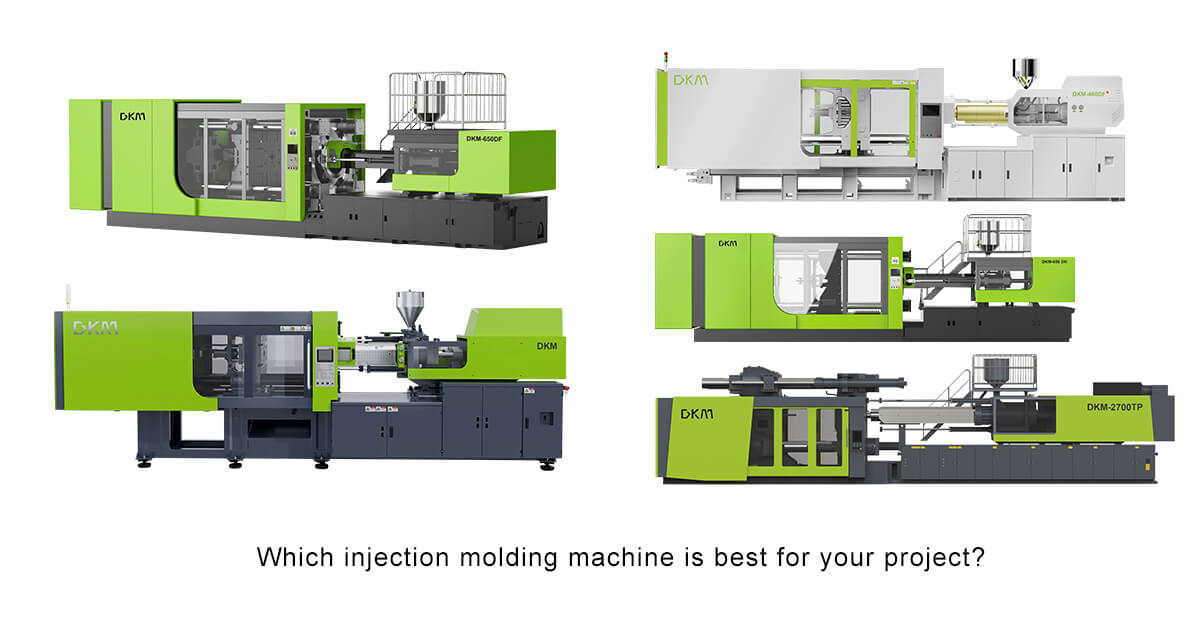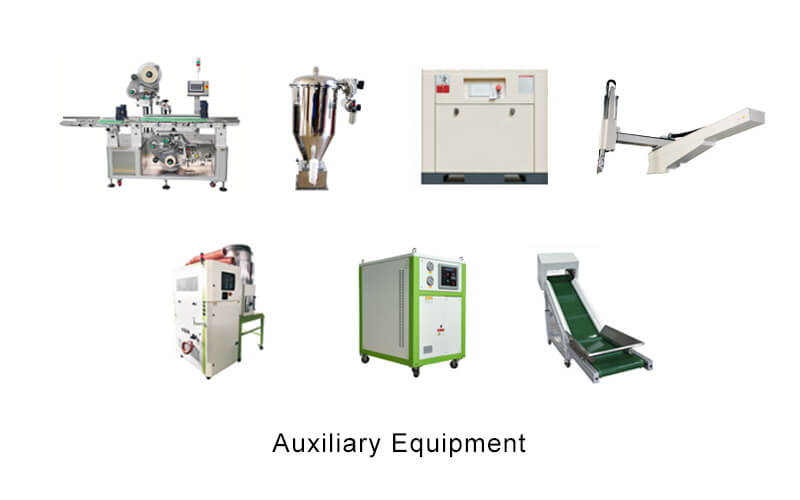


When selecting the best injection molding machine, several factors are crucial to consider to ensure optimal performance and efficiency:
Injection Capacity:
The machine should have a proper volume of injection capacity to have a smooth operation based on the amount your production may need.
Clamping Force:
A suitable machine that can hold the mold tight without creating any deformation or defects in the molded product must be selected during this process.
Remember to set proper injection speed and pressure values, as they should be correctly chosen for different materials and injection molding feature requirements.
Machine Size and Footprint:
The physical dimensions of the equipment are one of the critical parameters that must be observed. It should be able to fit within the available space in your workplace, give room for the workflow, and provide accessibility.
Select machines made from servo machines and a variable frequency drive (In Chinese: VFD) to maximize energy use efficiency and minimize operational cost.
Seek machines with advanced controlling systems and automation capabilities to increase the machines’ precision, repeatability, and ease of operation.
Select a machine from a credible manufacturer known for long-term operation stability and good service support to keep the machines in excellent condition so they won't clog up frequently, and timely maintenance and troubleshooting can be conducted if necessary.
Consider the costs of the purchase to the payback period of the machine relative to the benefits in the future for better decisions on the pricing and what the customer will benefit from buying the machine.
This motivation is an important consideration when choosing the suitable injection molding machine that will perfectly meet all your production specifications and costs.
When done right, plastic injection molding is the best way to make large quantities of finished plastic parts at a relatively low cost. However, achieving outstanding performance depends on carefully monitoring and controlling these five parameters.
Does your former supplier check all of these boxes?
Reducing cycle time to a minimum is the single best way to lower production costs while still maintaining product quality. Consider a single cycle that takes one second longer than it should for a production run of one million cycles, which adds upto almost 278, hours of extra costs, and that means lots of profits for the supplier, who may pass those costs on to you or cut down on quality to make up for the shortfall.
· Some examples of wasted time might include manually unloading finished parts from the mold hand-loading inserts, spraying release agents into the mold, inspecting parts in time, or waiting to load fresh raw material.
Now, I would like to make a point here, though, for the companies that do prototype and low-volume production, you will see some of what I have just described here, but once you start to get in anything that looks like higher volume production, these must be eliminated.

Solutions include automatic loading and unloading, automated inspection, improved tool design, and the use of specialized mold coatings to reduce friction and improve tool life. Since every production job is unique, no one solution works for everyone, so you really should work closely with your supplier to consider your options before you start production. You can contribute to the design of the part that helps with these manufacturing solutions.
· For example, using robot End-of-arm tooling-friendly nurtures and increasing draft angles to avoid sticky parts really helps.
Don’t get me wrong, I love water; who doesn’t like water? Water is wholesome and refreshing, but it is not suitable for everything. You want to keep excess water vapors out of your plastic resin pallets because when it gets hot, it bubbles, boils, toils, and troubles.
There are four ways to control Moisture for molding.
· Firstly, the plastic resin pallets should be dried according to the manufacturer’s satisfaction. This is done with hot air dryers or desiccant dryers, but hot air dryers only work when the ambient relative humidity is below 50%. So, most of the time here in southern China, they are useless.
Pro- tip: If your supplier's factory is suited to a highly humid area, order them to throw away their hot-air pallet driers and get desiccant driers.
· Secondly, Use a hygrometer to test your materials after drying. We have actually seen suppliers here in China that have dried their materials for hours in a hot-air drier and actually quadrupled the moisture content compared to the raw material in the sealed plastic bag from where it came; how ironic is that?
· Thirdly, try specifying hydrophobic materials, meaning they don't absorb moisture in the full place.
· And fourthly, find a supplier that keeps his factory at a controlled temperature and humidity all over year-round, as best you can.
If you don’t do this, you will endlessly have to Change your molding parameters.
There are four pressure settings related to molding-injection, packing, back pressure, and clamping- and they interact in complex ways. Therefore, one of the primary jobs for the process engineer is to balance them out to achieve a stable result in the shortest cycle time.
At the beginning of a new project, there's a relatively long setup and testing phase. However, when the ideal settings are confirmed, they must be recorded and strictly adhered to for all subsequent production runs. The only reason these settings might change over time is the old tool.
The best way to ensure stable pressure setups is to use quality equipment that’s regularly serviced and maintained. Only machines in good working order without leaks or faulty gauges, can be relied on to maintain their integrity cycle after cycle.
Along with regular maintenance, scheduling a clean and orderly workspace helps to identify machine leaks that can lead to pressure loss.
Using automated control software prevents any deviation from the optimum pressure settings once they are established.
Pro-tip: Ask your supplier to prove that they have and store all molding parameters in digital and possibly also paper format and that are kept safely and backed up-Many suppliers don’t. And every time they pull out your mold, they have effectively re-trialed your mold each time.
To achieve stable performance for higher volumes, the supplier must carefully control the temperature of the resin at every stage. Firstly, the resin is heated in the barrels to its ideal melt flow temperature, which is maintained for the shortest practical time needed to complete one injection cycle.
Why do you want to limit this time? Because otherwise, the molecular bonds of the plastic will permanently degrade, making it useless. In fact, suppliers will change the size of the barrels on their machines for different jobs. They do this to minimize the volume of the molten resin at any one time. And this is why sometimes you might see a small barrel in a giant machine.
Why is temperature regulated in the mold? The secret lies with the complex cooling circuits surrounding the core and cavity, although the term cooling is quite misleading. It’s more accurate to say the coolant distributes heat evenly around the mold core and cavity, acting more like a temperature-regulating mechanism. That’s why not only the temperature of the coolant but also its volume and circulation rate must be controlled to achieve consistent molding parameters.
Reputable manufacturers must safeguard the integrity of their material supply chain. This is incredibly challenging if you are dealing with hundreds of types of resin compounds potentially from many global suppliers.
For example, different formulations of nylon might mold the same way, and the finished parts look identical. But that can disguise some severe differences in mechanical and chemical properties. The only way to show conformance to specifications while meeting the customer's regulatory requirements is through positive material identification of every batch of raw material. We have several videos on this. Please forgive us for laboring on this point, It’s a major global problem.
Now, what does that have to do with optimizing cycle times? Well, imagine if a resin formulation changes slightly from one batch to another. This can lead to sub-standard parts and cause the molding conditions to fluctuate. It will take time to find the root cause of the problem, and it might also mean that the supplier has to re-trial and optimize the process again, which means more time and money lost.
To recap:
Look for suppliers that control cycle times, moisture, temperature, pressure, and material inputs if they offer you the best results for plastic injection molding. Using this information, you are now in a better position to evaluate the performance of your current supply partners.
